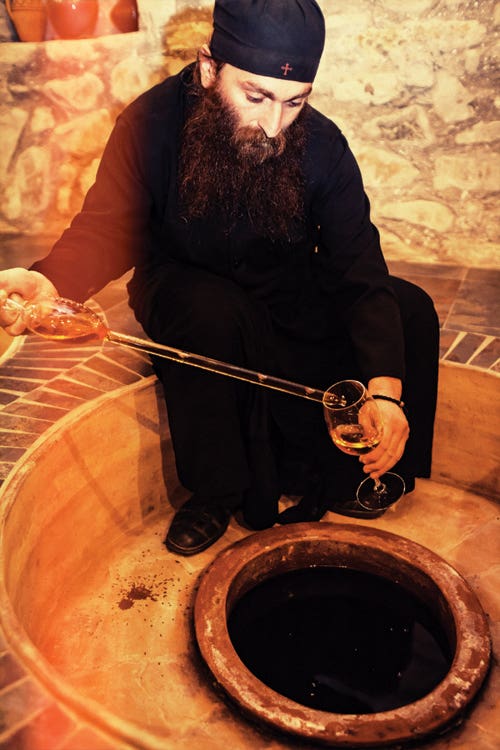
Cradle of Wine
The Republic of Georgia is home to a unique winemaking tradition that stretches back thousands of years. This article first appeared in our April 2013 issue with the feature Everlasting Feast.
Georgia is home to a unique winemaking tradition that stretches back thousands of years: Grapes here are crushed, then fermented skin-on for several months in buried earthenware vessels called qvevri. Prolonged contact with the skins produces wines that are rich in tannins, which lend depth and dryness, plus great stability and structure. After fermentation, the wine is typically transferred to another qvevri to age, where it acquires even greater dimension. There are more than 500 grape varietals in Georgia, but in Kakheti the most common white variety is rkatsiteli, which yields vivid amber wines that go perfectly with Georgian food. The flame-colored Alaverdi Monastery Rkatsiteli 2010 ($25), made by monks who have been producing qvevri wines since the year 1011, offers heady notes of walnut, strawberry, and honeysuckle that can stand up to savory dishes such as chicken with walnut sauce. Pheasant's Tears Rkatsiteli 2009 ($18), an earthy wine with mouth-gripping tannins and deep aromas of dried apricot and pu-ehr tea, complements bitter greens and sauteed eggplant. Dergi Rkatsiteli 2009 ($20), a dry, austere wine with a bright, floral lift and a lemon-zest finish, is a match for the salty, buttery Georgian cheese bread khachapuri. The region's most common red grape, saperavi, is used to make Nika Saperavi 2009 ($20), a deep purple, earthy Bordeaux-like wine that's a good match for veal and sour plum stew. All of these wines open up particularly well with decanting.
Keep Reading
Continue to Next Story










